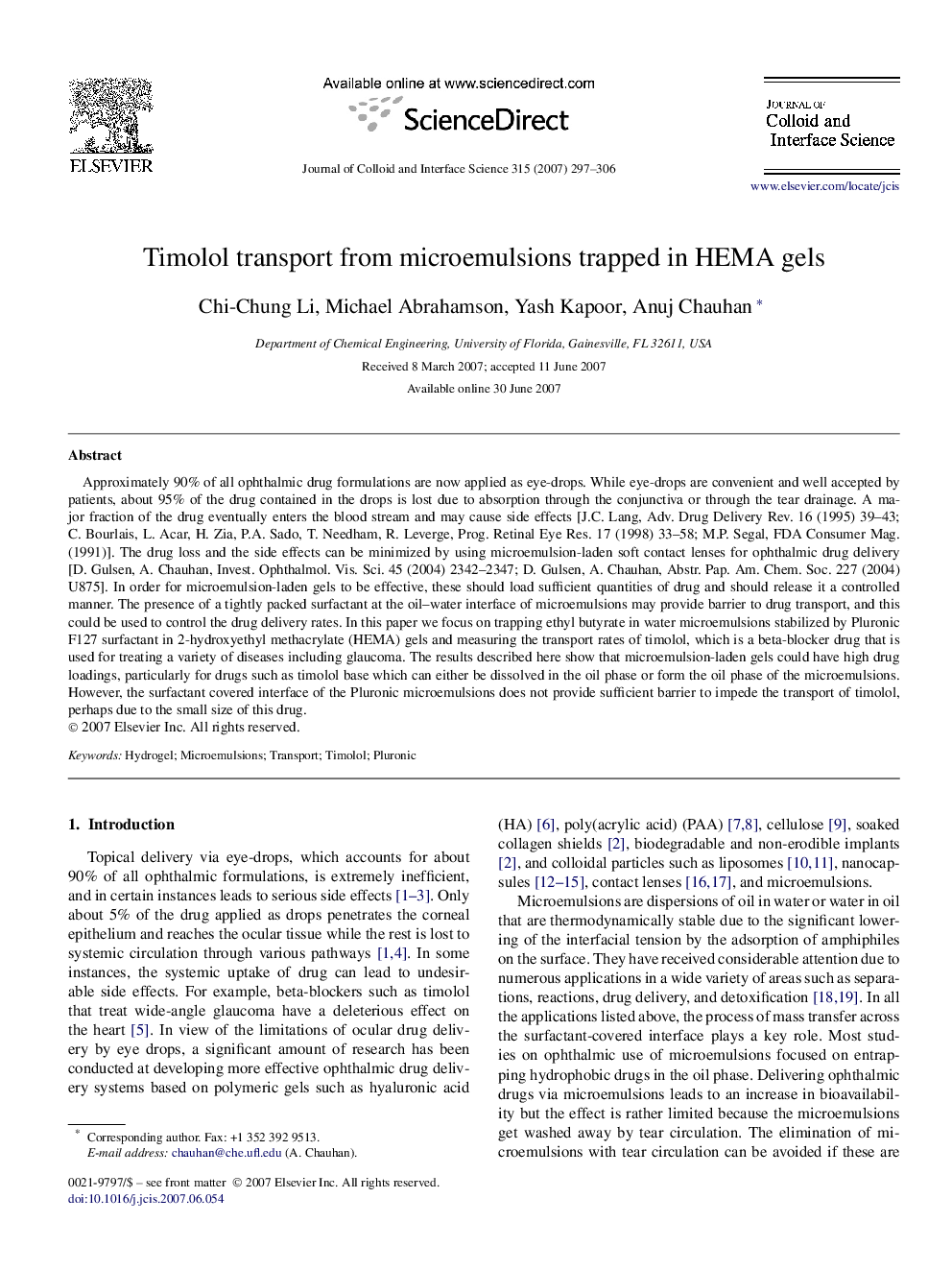| کد مقاله | کد نشریه | سال انتشار | مقاله انگلیسی | نسخه تمام متن |
|---|---|---|---|---|
| 612289 | 880694 | 2007 | 10 صفحه PDF | دانلود رایگان |

Approximately 90% of all ophthalmic drug formulations are now applied as eye-drops. While eye-drops are convenient and well accepted by patients, about 95% of the drug contained in the drops is lost due to absorption through the conjunctiva or through the tear drainage. A major fraction of the drug eventually enters the blood stream and may cause side effects [J.C. Lang, Adv. Drug Delivery Rev. 16 (1995) 39–43; C. Bourlais, L. Acar, H. Zia, P.A. Sado, T. Needham, R. Leverge, Prog. Retinal Eye Res. 17 (1998) 33–58; M.P. Segal, FDA Consumer Mag. (1991)]. The drug loss and the side effects can be minimized by using microemulsion-laden soft contact lenses for ophthalmic drug delivery [D. Gulsen, A. Chauhan, Invest. Ophthalmol. Vis. Sci. 45 (2004) 2342–2347; D. Gulsen, A. Chauhan, Abstr. Pap. Am. Chem. Soc. 227 (2004) U875]. In order for microemulsion-laden gels to be effective, these should load sufficient quantities of drug and should release it a controlled manner. The presence of a tightly packed surfactant at the oil–water interface of microemulsions may provide barrier to drug transport, and this could be used to control the drug delivery rates. In this paper we focus on trapping ethyl butyrate in water microemulsions stabilized by Pluronic F127 surfactant in 2-hydroxyethyl methacrylate (HEMA) gels and measuring the transport rates of timolol, which is a beta-blocker drug that is used for treating a variety of diseases including glaucoma. The results described here show that microemulsion-laden gels could have high drug loadings, particularly for drugs such as timolol base which can either be dissolved in the oil phase or form the oil phase of the microemulsions. However, the surfactant covered interface of the Pluronic microemulsions does not provide sufficient barrier to impede the transport of timolol, perhaps due to the small size of this drug.
Pseudo-phase diagram for the six component (ethyl butyrate oil), water + HEMA +NaCl + NaOH (continuous phase) and Pluronic F127 (surfactant) microemulsion at 5.3 °C.Figure optionsDownload as PowerPoint slide
Journal: Journal of Colloid and Interface Science - Volume 315, Issue 1, 1 November 2007, Pages 297–306